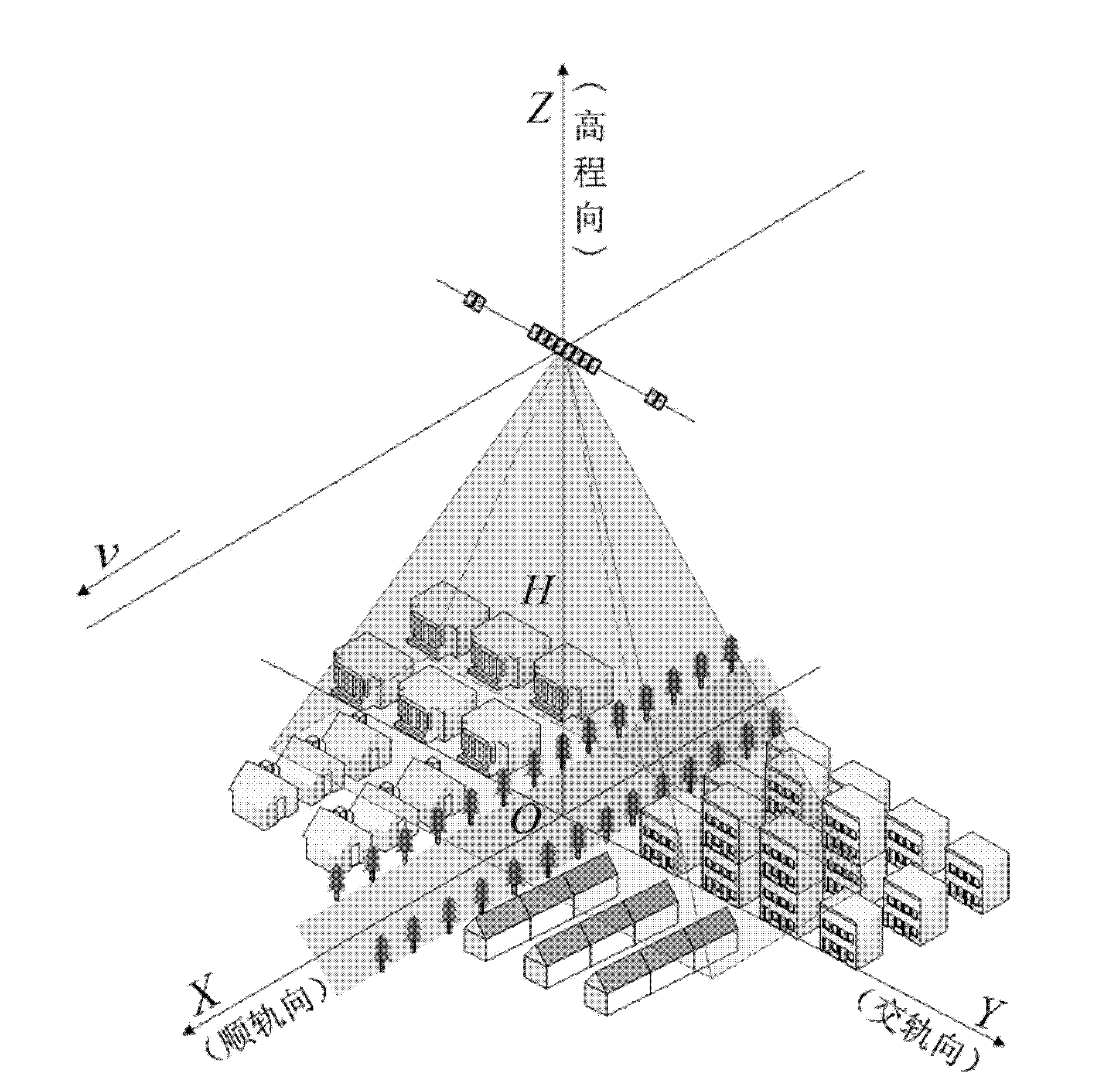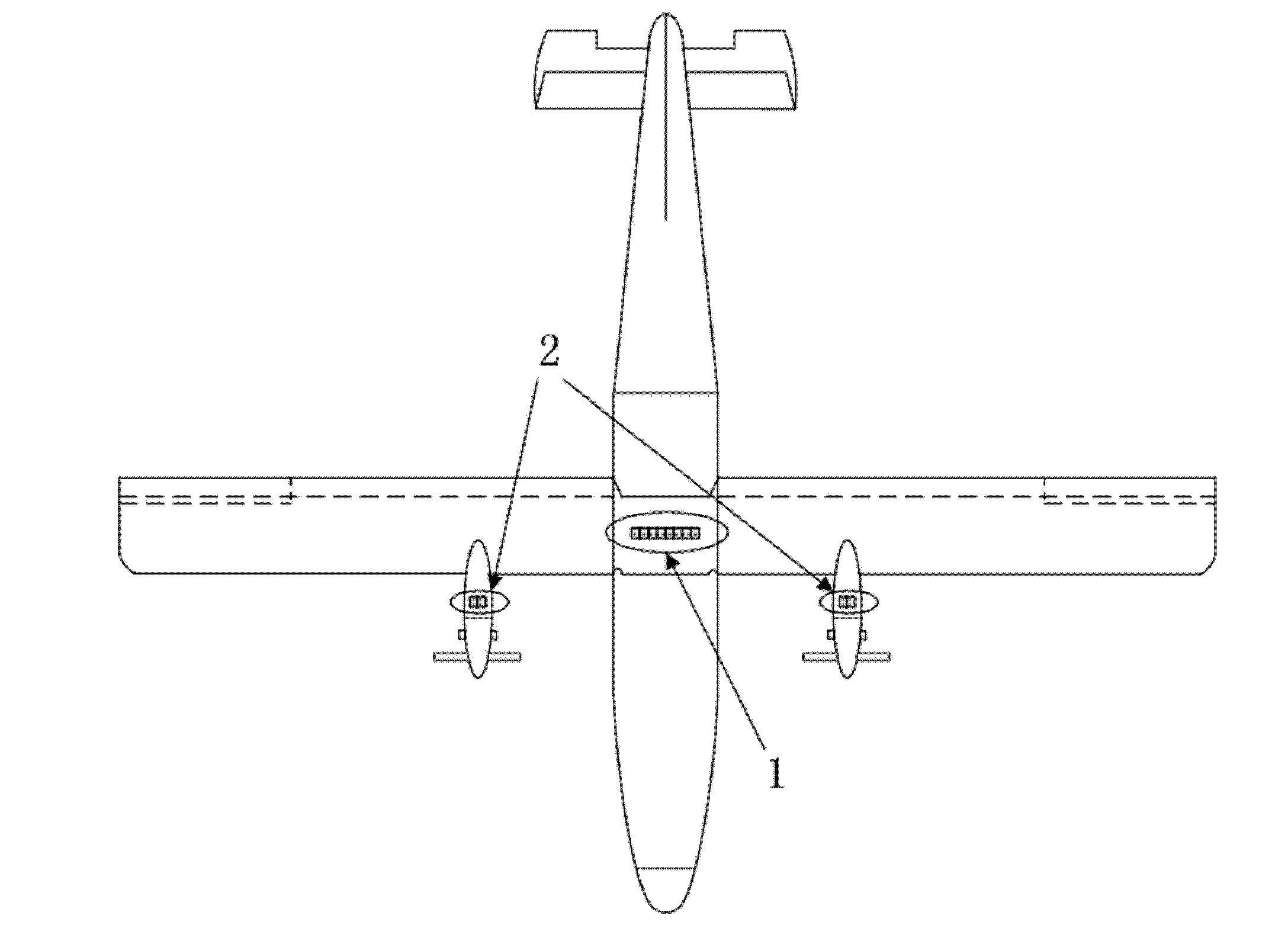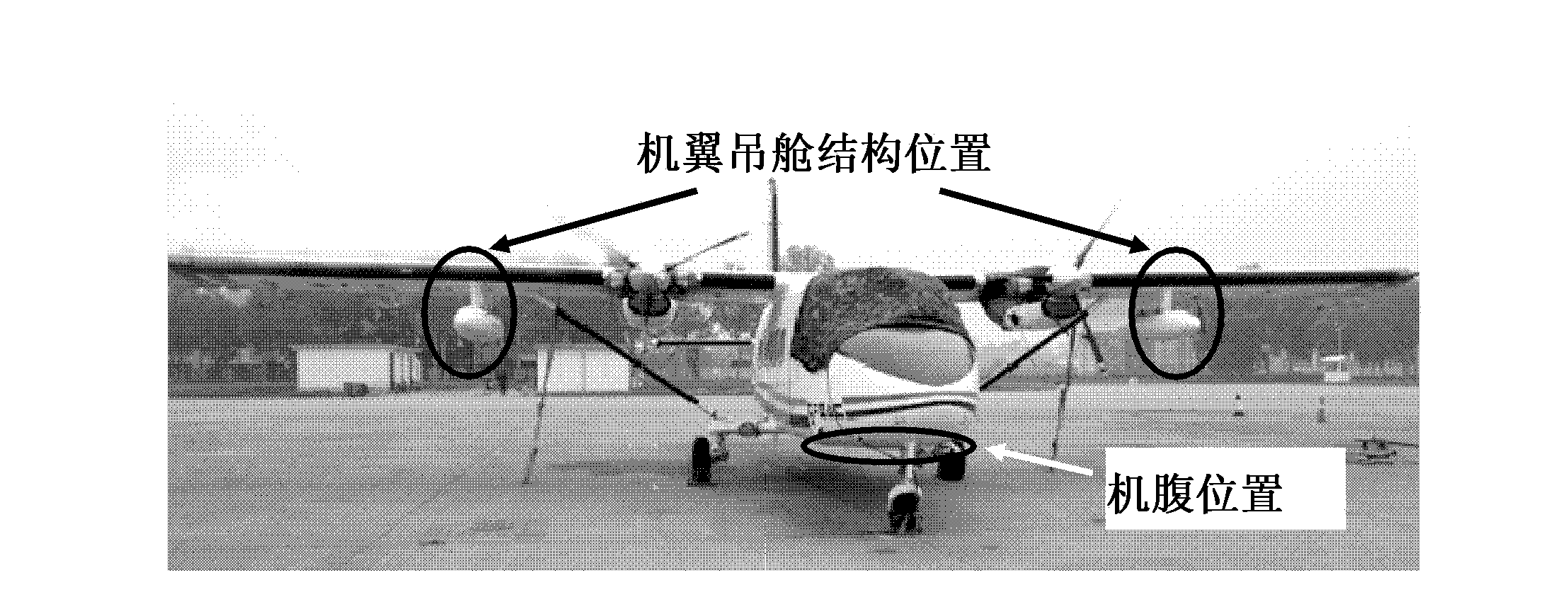Airborne thinned array antenna downward-looking three-dimensional imaging radar system and imaging method
A sparse array and three-dimensional imaging technology, which is applied in the radio wave measurement system, radio wave reflection/re-radiation, and re-radiation, can solve the problems of limited observation width, narrow sub-array beam, and increased number of sub-arrays. Achieve high-precision motion compensation, realize motion compensation, and improve the effect of imaging quality
- Summary
- Abstract
- Description
- Claims
- Application Information
AI Technical Summary
Problems solved by technology
Method used
Image
Examples
Embodiment Construction
[0041] In order to make the object, technical solution and advantages of the present invention clearer, the present invention will be further described in detail below in conjunction with specific embodiments and with reference to the accompanying drawings.
[0042] For such as figure 1 The airborne downward-looking three-dimensional imaging radar system shown in the present invention is designed from the perspective of analyzing its cross-track array layout form, so as to realize high-resolution and wide-format imaging of the observation scene.
[0043] Specifically, the airborne sparse array downward-looking three-dimensional imaging radar system of the present invention includes an airborne platform, a sparse array antenna system, and a distributed POS (Position and Orientation System).
[0044] The airborne platform is an aircraft for carrying the sparse array antenna system and distributed POS. The aircraft can be equipped with array antennas in the middle and both sides,...
PUM
 Login to View More
Login to View More Abstract
Description
Claims
Application Information
 Login to View More
Login to View More - R&D
- Intellectual Property
- Life Sciences
- Materials
- Tech Scout
- Unparalleled Data Quality
- Higher Quality Content
- 60% Fewer Hallucinations
Browse by: Latest US Patents, China's latest patents, Technical Efficacy Thesaurus, Application Domain, Technology Topic, Popular Technical Reports.
© 2025 PatSnap. All rights reserved.Legal|Privacy policy|Modern Slavery Act Transparency Statement|Sitemap|About US| Contact US: help@patsnap.com



